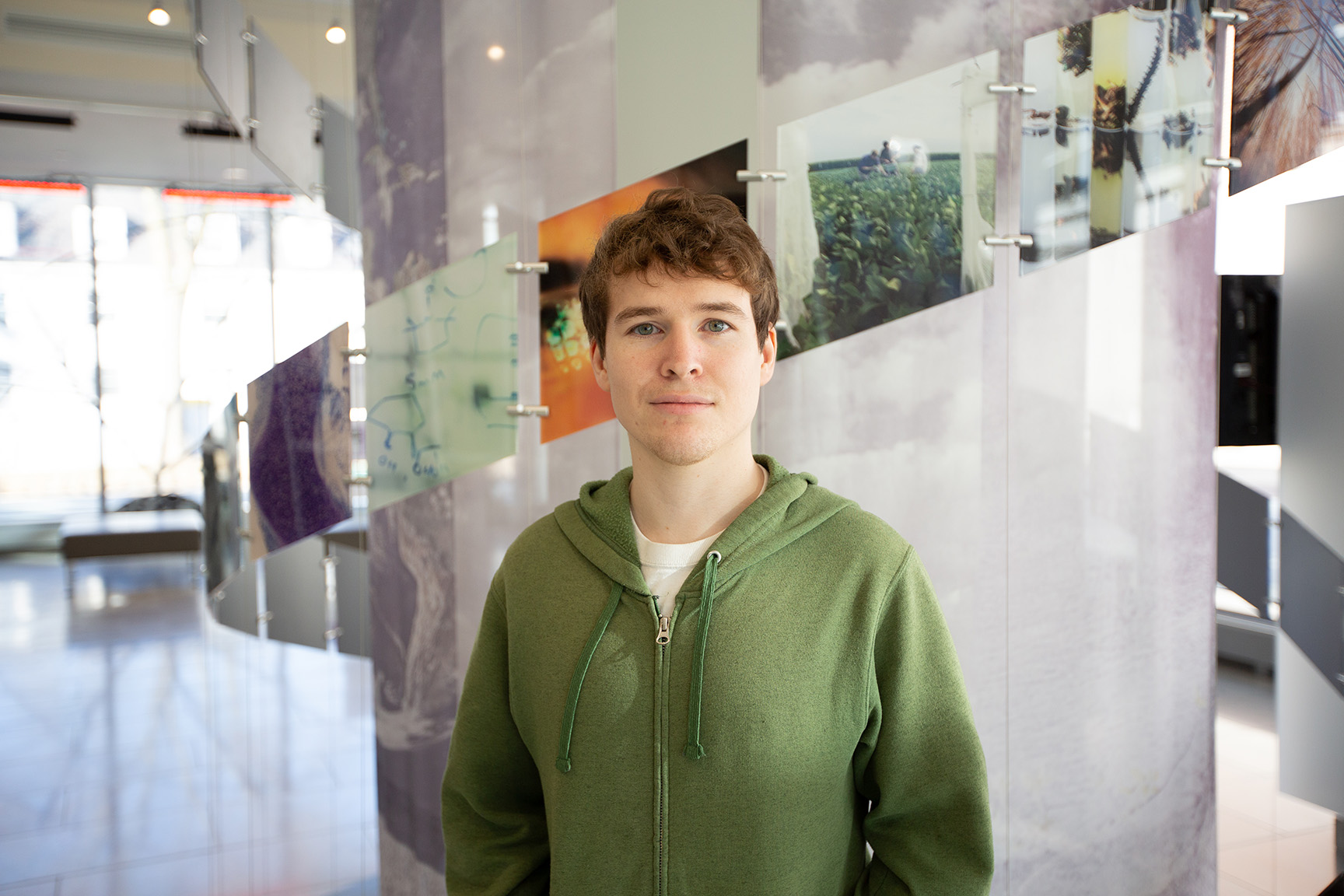By: Shelby Lawson
Mapping parental behaviors to genotypes in stickleback fish
It would be challenging to find someone who became interested in animal behavior at a younger age than Colby Behrens, a current PhD candidate in the Evolution, Ecology, and Behavior department. Growing up on a dairy farm in northeast Iowa, Behrens says he learned early on the importance of understanding the behavioral cues of animals.

“If you're going to be around cattle, you have to know when it’s safe to stand behind them, or which direction they'll move, or if they’re ok with people approaching them, otherwise they will kick and wreck you,” described Behrens. “So, I became very interested in behavior when learning about the behavior of our farm animals and how to interact with them properly.”
To learn more about animal behavior, Behrens attended Iowa State and obtained his bachelor’s in biology, with the goal of working with animals in a zoo when he finished. However, after a summer internship at the Omaha Zoo during college, he decided it wasn’t exactly what he wanted. “The zoo was great, but I realized working there was basically just farming all over again.” Behrens said.
Though he was involved in many projects at Iowa State with a variety of animals, he became inspired by a project he conducted on paper wasps, led by his advisor Amy Toth, a professor of entomology. The project involved studying the wasps’ personalities at the individual level, and examining how genomics influenced their behaviors. This experience drove Behrens to apply to the graduate program at the University of Illinois Urbana-Champaign with Alison Bell (GNDP leader), a professor of evolution, ecology, and behavior, who specializes in studying the mechanisms of personality and behavioral differences among stickleback fish.
Behrens’ doctoral research looks specifically at two different populations of Gasterosteus aculeatus, the three-spined stickleback: The common morph and white morph. These two populations are genetically very similar, and often overlap in the habitats they preside in, but they display drastically different parental behavior.
“Commons provide parental care, and will fan their eggs, defend their nest, and care for the embryos for a week or two,” Behrens explained. “White just grab eggs with their mouth, spit them out to disperse them, and then are essentially done with them. This is a massive shift in behavior, between heavy parental care and complete absence within two populations that are very closely related and often live in the same place.”
Behrens says these differences make stickleback fish an excellent system to test the interplay between genomics and behavior. Using transcriptomics and QTL mapping, he can measure expression of genes in the brains of the fish, and then associate genotypes with phenotypic behaviors. The two populations of fish can also interbreed in the lab, which allows Behrens to see how changes in parental care across generations changes with the mixing of genotypes from the two species. When the species are bred together, the F2 hybrids, or the offspring of that pairing, display everything across the spectrum of parental care.
“Some F2s just disperse the embryos and they’re done, even though they look like commons. Some build a nest and take care of the eggs for while, and some only build a nest but then just disperse the eggs. Some look like white sticklebacks but display all the parental care. So we get this really nice split in the variation that is really necessary if you want to map the phenotype in the population.”
In his current research he has found that in addition to parental care, there are also differences in courtship, type of nest built, and even egg traits, such as size and ovarian fluid coating, between the species and among the mixed-species F2s. He has also found that hundreds of genes are differentially expressed between the species and F2s, and across the stages of nesting within the same male.
However, the intensity of breeding and maintaining multiple generations, as well as securing a big enough sample size for QTL mapping, can make it difficult to conduct these experiments, and Behrens says it’s not without the occasional failure. But he also explained that he doesn’t let failure get him down, because it’s always worth the risk of trying.
“I like to read classic books in my spare time, and there’s this quote from Oscar Wilde’s ‘The Picture of Dorian Gray’ that I really like, that goes ‘Nowadays most people die of a sort of creeping common sense, and discover when it is too late that the only things one never regrets are one's mistakes,’” said Behrens. “Basically, if you want to live a good life you have to take some risks every now and then and be willing to make mistakes. And I also think it relates to research well. Like I don't always know if this is gonna work but let's just go ahead and put these fish in a tank and try it to see if this experiment works out.”
In addition to reading, Behrens also enjoys woodworking with his wife Lindsey, who he met in Spain during a study abroad trip through Iowa State. She also recently graduated as a masters student at Illinois in the department of Cell and Developmental Biology. Together in their woodworking they have built a couch and multiple desks, and his next goal is to carve a model of every research organism he has worked on. Behrens also likes to spend time with his dog, a pitbull-mix named Dice. “He mostly just sits on the couch all day and is afraid of the rain, but he is a good dog.” Behrens joked.
Behrens plans to graduate this year, and will be seeking a postdoctoral position in academia to continue exploring genetics and behavior.
By: Shelby Lawson
Photos By: Julia Pollack

